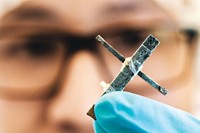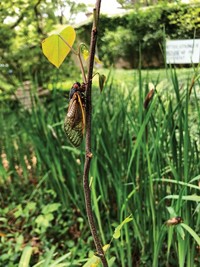Advertisement
Grab your lab coat. Let's get started
Welcome!
Welcome!
Create an account below to get 6 C&EN articles per month, receive newsletters and more - all free.
It seems this is your first time logging in online. Please enter the following information to continue.
As an ACS member you automatically get access to this site. All we need is few more details to create your reading experience.
Not you? Sign in with a different account.
Not you? Sign in with a different account.
ERROR 1
ERROR 1
ERROR 2
ERROR 2
ERROR 2
ERROR 2
ERROR 2
Password and Confirm password must match.
If you have an ACS member number, please enter it here so we can link this account to your membership. (optional)
ERROR 2
ACS values your privacy. By submitting your information, you are gaining access to C&EN and subscribing to our weekly newsletter. We use the information you provide to make your reading experience better, and we will never sell your data to third party members.
Environment
Newscripts
Winds of Change, Forest of Dreams
by Marc S. Reisch
October 20, 2008
| A version of this story appeared in
Volume 86, Issue 42
Traditional energy sources either are all but tapped out or threaten to wreck the environment, so it will take any number of new technologies to bring more sustainable power to the people. Boston is doing a smidgeon of its part with an electric-generating WIND TURBINE that began operating atop City Hall early in September.
As a symbolic effort to jump-start the city's greening effort, the wind turbine's contribution is just a drop in the bucket: It produces enough juice to power 18 100-W light bulbs. And as a gesture to the environmentally friendly power movement, the installation's economics are less than compelling. Even after an Arizona firm donated the turbine and others made contributions to the installation cost, the city had to shell out $8,000 to hoist and strap the device to the reinforced concrete roof of City Hall.
In addition, the winds of change are anything but reliable. It's smooth sailing when the wind ramps up, but if those winds exceed 25 mph, the rotors slow as a protective measure. On days with nary a breeze, those 18 bulbs in the offices below have to draw their power from the grid.
And then there are the blow-me-down gusts that come out of nowhere. Just a few weeks after the generator got going, a strong draft triggered the turbine's safety mechanisms, shutting the system down. Turbines have a few other problems, too. A power surge or a technical glitch of one sort or another will also shut down the unit.
Government buildings may not be an ideal location for wind turbines after all. Earlier this year, city engineers nixed Mayor Thomas M. Menino's plan for a larger turbine atop the municipal government center, saying winds in the area are too turbulent. A determined supporter of alternative energy, the mayor still wants to place turbines on the roofs of some city schools.
New York City Mayor Michael R. Bloomberg proposed the installation of wind turbines on top of city skyscrapers and bridges in late August but backpedaled a few days later, saying he wasn't sure it made scientific or practical sense.
In another angle on the global quest for sustainability, some researchers are wondering whether it makes scientific or practical sense to construct a modern town in the Brazilian rain forest that is as ecologically sustainable as the species-rich forest itself. It's about time, too, because deforestation to grow crops and raise cattle has already taken a toll on the Amazon.

As a start, at an August conference held at the Universidade Federal do Amazonas, in Manaus, Brazil, scientists proposed using sisal and other fiber-producing plants native to the Amazon to REINFORCE CONCRETE STRUCTURES.
Two Cornell University scientists at the event, Anil Netravali and Juan Hinestroza, both from Cornell's College of Human Ecology, weren't there to plan a sustainable rain forest village, which indigenous people have been rather adept at for thousands of years. Instead, they had more narrowly focused objectives. They talked to colleagues at the meeting in search of a sustainable source of plants to fashion such things as advanced lightweight construction beams or housings for electronics.
For his part, Hinestroza is working to establish a network of investigators across Latin America to look for useful cellulosic and lignocellulosic substrates from plants that grow in the jungles of Brazil and the forests of Colombia. Netravali talked to colleagues about research on biodegradable composites made from plant fiber and a resin derived from soy protein as an alternative to petroleum-based composites.
"Some of these fiber-producing plants have extraordinary properties that could be harnessed to produce high-performance materials in a truly sustainable fashion," Hinestroza says.
Marc Reisch wrote this week's column. Please send comments and suggestions to newscripts@acs.org.






Join the conversation
Contact the reporter
Submit a Letter to the Editor for publication
Engage with us on Twitter